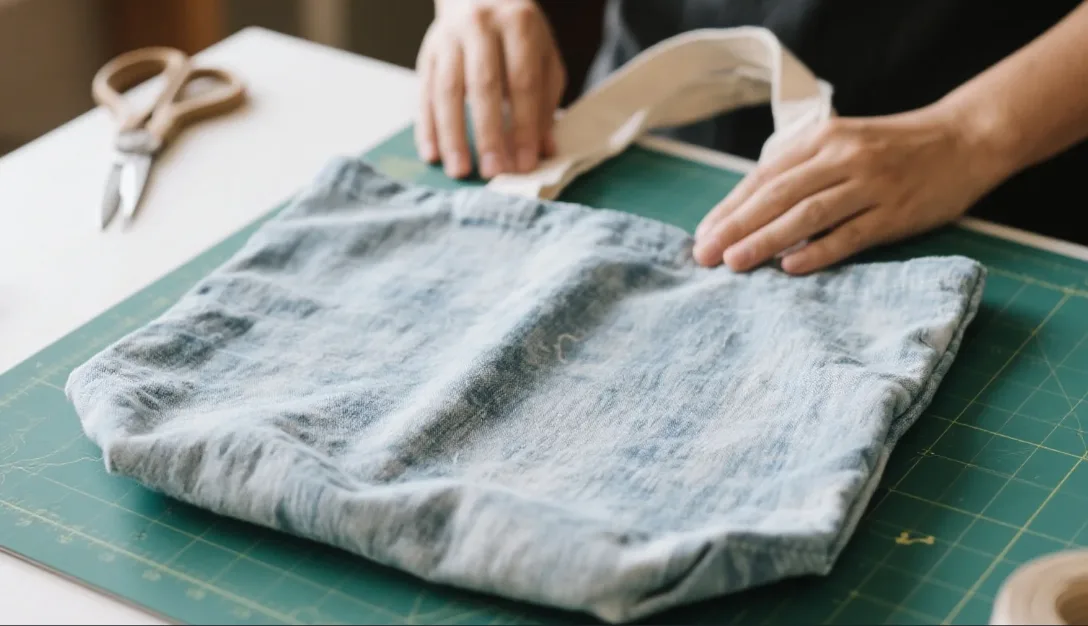In the process of bag manufacturing, dyeing is a crucial step to give fabric its color, but it’s only the first step in creating a high-quality bag. To meet the diverse and personalized demands of the market, bag fabrics often undergo various specialized washing techniques. These processes not only enhance the visual appeal of the fabric—adding depth and texture to the color—but also improve softness and durability, elevating the overall user experience.
Different washing techniques, such as stone wash, enzyme wash, and acid wash, use physical or chemical methods to treat the fabric surface, creating natural wear, vintage effects, or a soft and smooth feel. This not only makes each bag visually unique but also provides brands with greater creative flexibility and competitive advantages. Washing techniques serve as an essential bridge between design innovation and manufacturing, playing an irreplaceable role in bag quality and market performance.
This article will focus on introducing seven popular washing techniques commonly used after fabric dyeing. Each technique’s characteristics and effects will be explained in detail to help readers better understand how scientific washing treatments can give bags distinctive styles and superior performance.
Contents
1. Stone Washed Fabric Canvas Bag
Stone wash originated in the 1960s within denim manufacturing as a technique to create a natural worn and vintage look. As the process matured, it became widely used in bag factories to treat fabric for custom bags, becoming an essential method to give bags unique character and texture.
During the stone wash process, industrial washing machines are loaded with stones or abrasive materials—such as silica sand or lightweight pebbles—that mechanically rub against the fabric surface. Through the combined action of water flow and tumbling, these stones continuously strike and abrade the dyed fabric, partially removing the dye layer to produce a natural faded and distressed effect. This process not only softens the fabric but also creates rich color variations and a vintage worn appearance.
Stone washing is suitable for large-scale production and works well with various canvas and cotton materials, especially for casual, travel, and vintage-style bags. Its distinctive visual and tactile effects make stone-washed custom bags popular among young consumers and those seeking personalized, rugged aesthetics.
a. Common bag types: casual backpacks, canvas totes, travel bags, street-style shoulder bags
b. Typical color effects: naturally faded blues, grays, browns, and other vintage tones
c. Production features: ideal for mass production with mature techniques and high efficiency
Stone wash not only imparts a unique vintage charm to bags but also enhances their texture and durability, giving custom bag manufacturers a competitive edge in the market.
2. Enzyme Wash Fabric Canvas Bag

Enzyme wash is a modern textile treatment that uses natural biological enzymes to break down the surface fibers of the fabric. This eco-friendly process gently decomposes the rough fibers without damaging the integrity of the material, resulting in a smoother and softer texture. Unlike harsh chemical treatments, enzyme washing is considered environmentally sustainable, making it a preferred choice in custom bag manufacturing focused on green production.
During the process, specific enzymes are applied in controlled conditions, which selectively remove fuzz and impurities from the fabric surface. This improves the hand feel of bag materials, giving them a natural softness and enhancing overall comfort without compromising durability.

Enzyme wash is widely used in bag factories for various fabric types, especially cotton and canvas, where a refined, soft touch is desired without altering the original color too much. The process is gentle, making it suitable for delicate fabrics and high-quality custom bags.
a. Common bag types: tote bags, casual backpacks, laptop bags, fashion handbags
b. Typical effects: smoother fabric surface, reduced fuzziness, natural softness
c. Production features: eco-friendly process, suitable for delicate fabrics, consistent quality
Enzyme washing not only elevates the tactile experience of bags but also aligns with sustainable manufacturing trends, adding value to custom bags in a competitive market.
3. Acid Wash Fabric Canvas Bag
Acid wash originated in the early 1970s, first introduced by denim manufacturers in the United States and Europe to create a distinctive vintage, mottled effect through a specialized chemical process. In the 21st century, with the rise of personalized and retro fashion trends, acid wash techniques have gradually been adopted widely in the custom bag industry. Bag factories began using acid wash to produce bespoke bags with unique styles and layered textures, catering to the diverse demands of modern consumers.
The acid wash process uses acidic solutions to selectively corrode the fabric surface. By carefully controlling the concentration and exposure time of the acid, uneven fading and mottled patterns are produced, giving bags a bold personality and rich visual depth.
This technique is most commonly applied to denim and heavy cotton fabrics, ideal for creating vintage, rock, or street-style bags. Acid washing results in random color variations and worn effects on the bag’s surface, enhancing the product’s artistic appeal and distinctiveness.
Acid wash is a mature technique in bag manufacturing, suitable for mass production but requires precise control of process parameters to ensure consistent effects without compromising fabric durability.
a. Common bag types: denim backpacks, canvas totes, street-style sling bags
b. Typical effects: uneven fading, mottled textures, personalized layers
c. Production features: suitable for mass production, requires precise process control
Acid wash enriches the visual expression of bags and provides designers with more creative possibilities, boosting product competitiveness in the market.
4. Silicone Wash Fabric Canvas Bag

Silicone wash involves adding silicone oil during the washing process to effectively soften the fabric of the bag, resulting in a smoother and more delicate touch. The unique properties of silicone oil also provide the fabric with water-resistant capabilities, enhancing the bag’s practicality and durability. This technique not only improves the hand feel but also increases the bag’s surface resistance to moisture and stains, making it easier to clean and maintain.

Silicone wash is suitable for various materials, especially canvas, cotton, and synthetic fibers, and is widely used in custom bag factory production processes. By carefully controlling the amount of silicone oil and washing conditions, the desired softness and protective effects can be achieved, meeting consumers’ dual demands for functionality and comfort.
a. Common bag types: outdoor backpacks, travel bags, casual tote bags
b. Typical effects: smooth touch, water-resistant, stain-resistant, easy to clean
c. Production features: stable process, suitable for mass production
Silicone wash not only enhances the user experience but also boosts market competitiveness, making it an indispensable technique in the custom bag industry.
5. Bleach Wash Fabric Canvas Bag
Bleach wash involves using bleach to partially fade or lighten the fabric, creating a light-toned or natural gradient effect. During the process, strict control over bleach concentration and exposure time is essential to prevent excessive damage or thinning of the fabric. Typically, bleach concentration is maintained between 1% to 3%, with treatment times ranging from 10 to 30 minutes, adjusted flexibly based on fabric thickness and initial dye depth.
This technique is commonly applied to cotton and canvas bags, giving them a fresh, clean look that appeals to designers seeking bright colors and a fashionable vibe. Luxury brands such as Louis Vuitton (LV) and Coach have employed bleach wash techniques to create unique gradient and vintage-style limited edition bags, showcasing the broad application and creative potential of bleach washing in high-end custom bag manufacturing.
a. Common Bag Types: Light-colored canvas bags, casual tote bags, eco-friendly shopping bags
b. Typical Effects: Light tones, gradient colors, clean and bright appearance
c. Production Characteristics: High demand for precise process control, suitable for professional bag factories with batch production capabilities
Bleach wash gives bags a crisp and simple appearance while offering designers greater creative possibilities.












